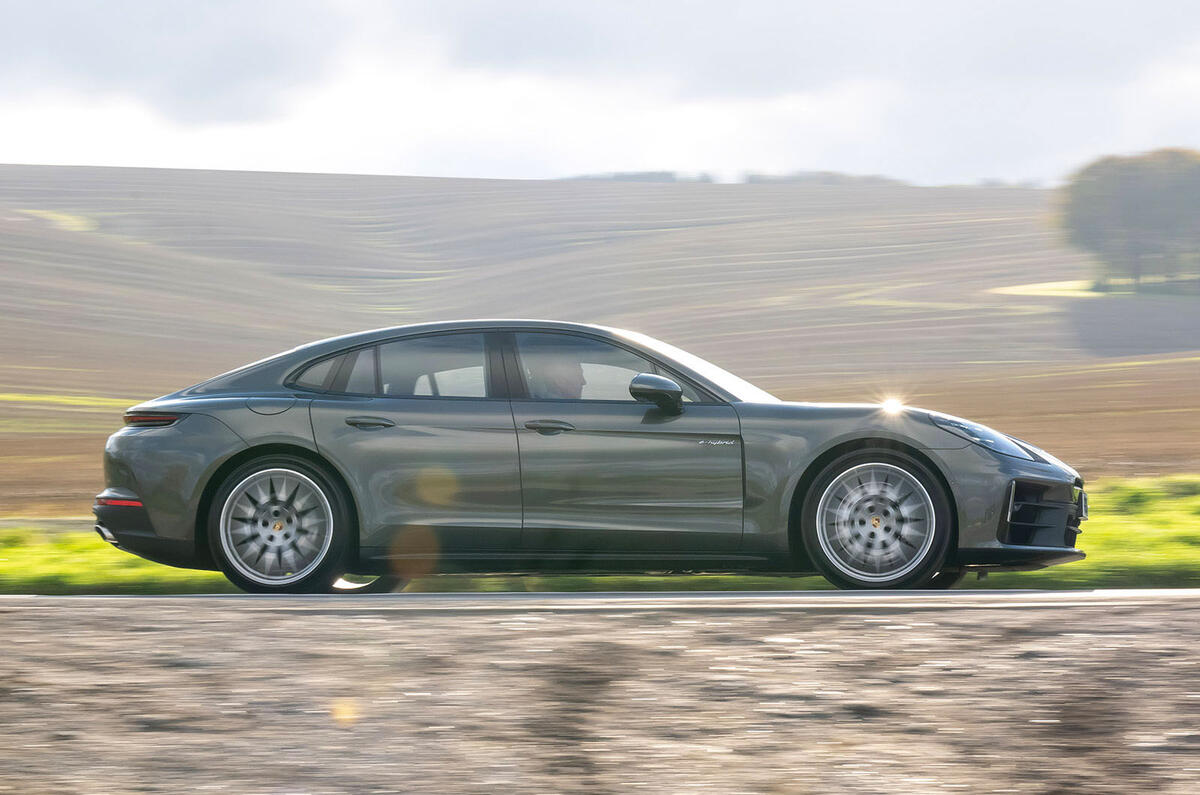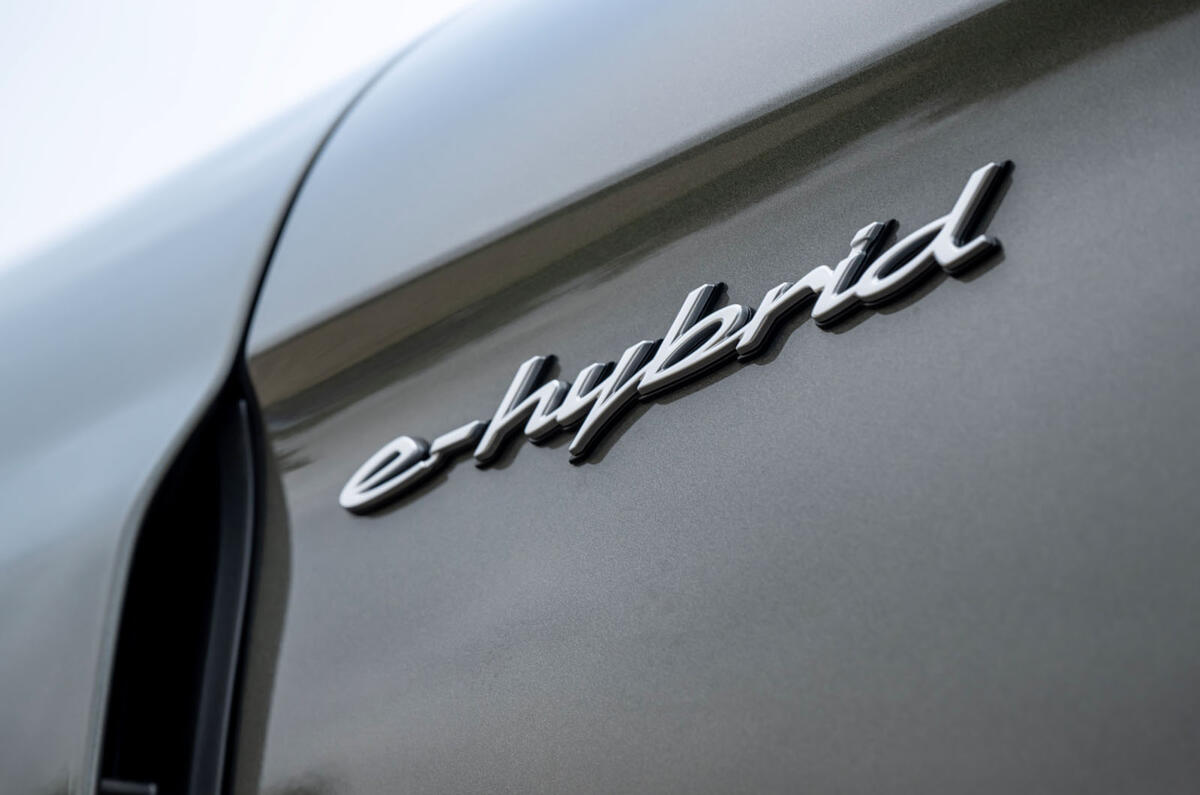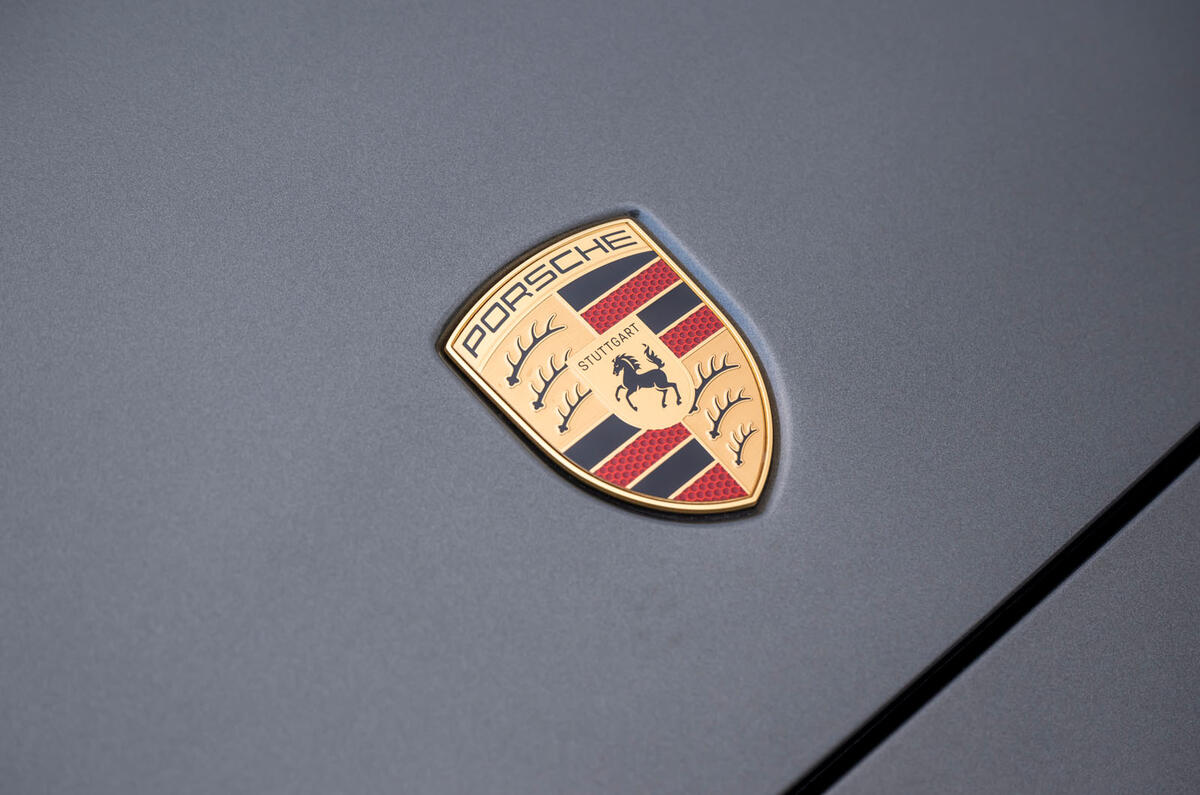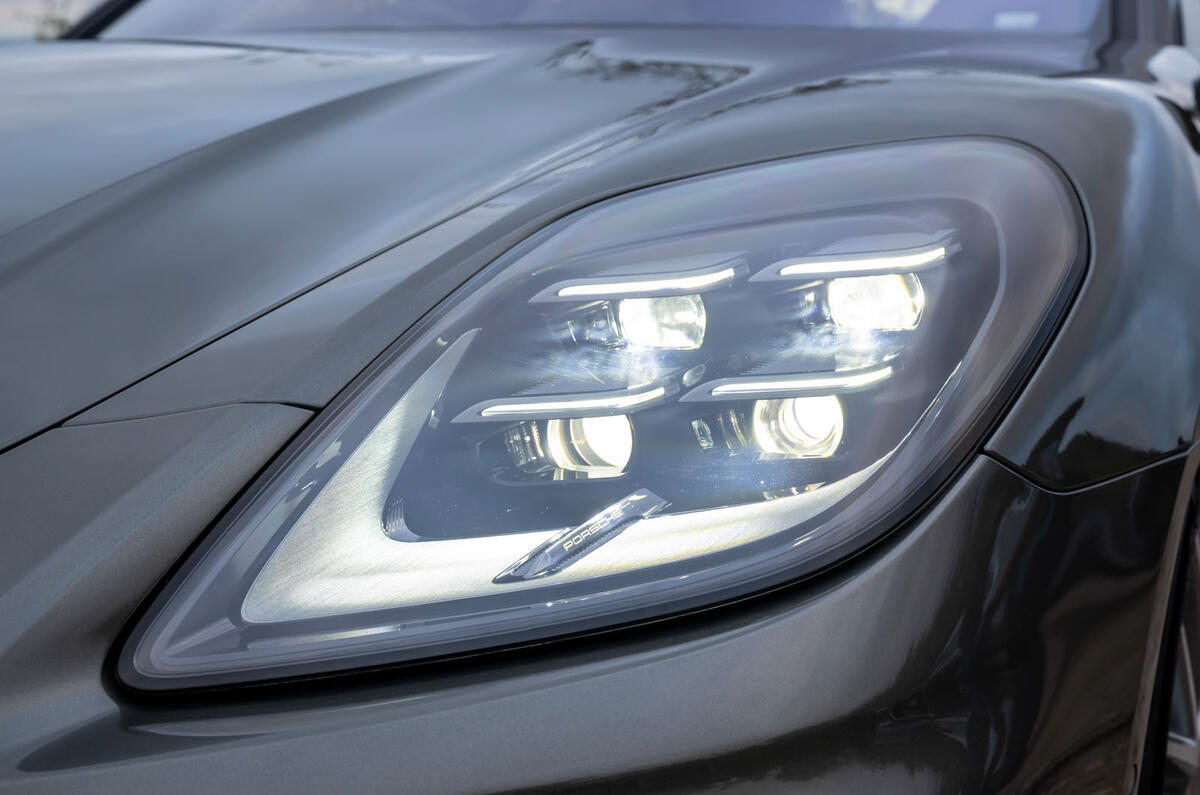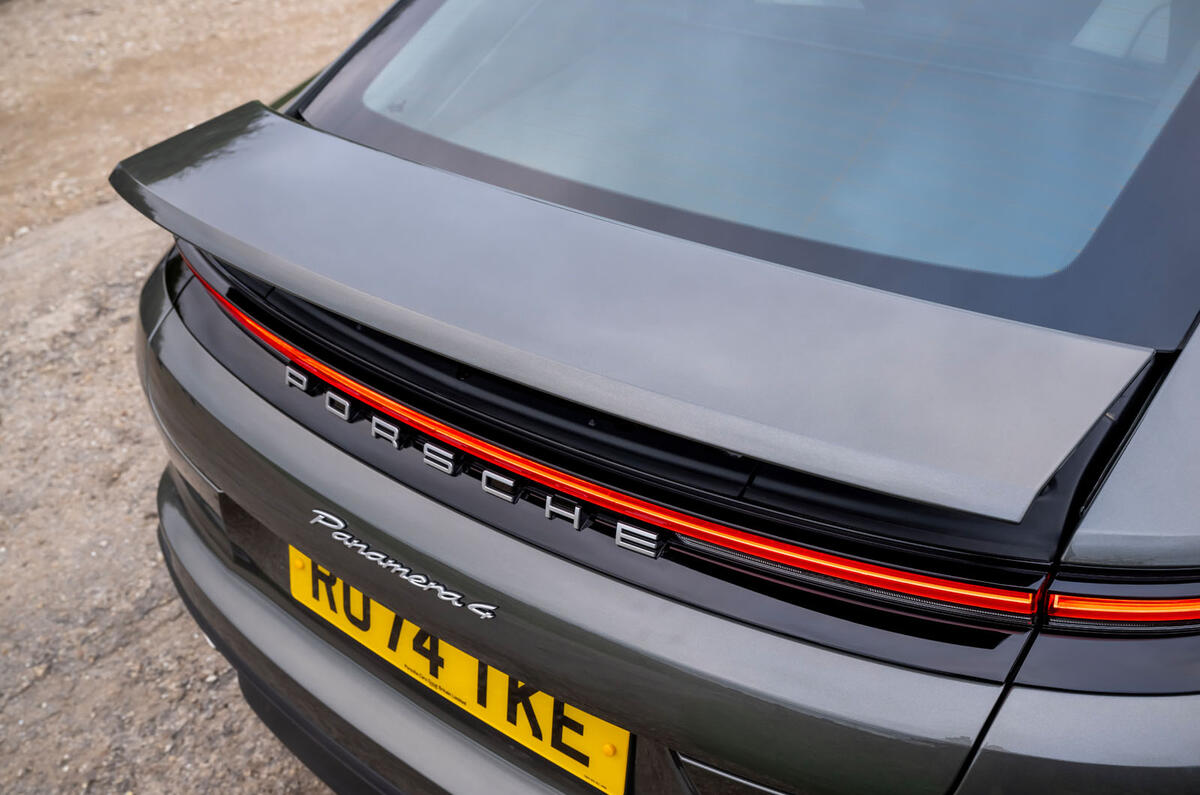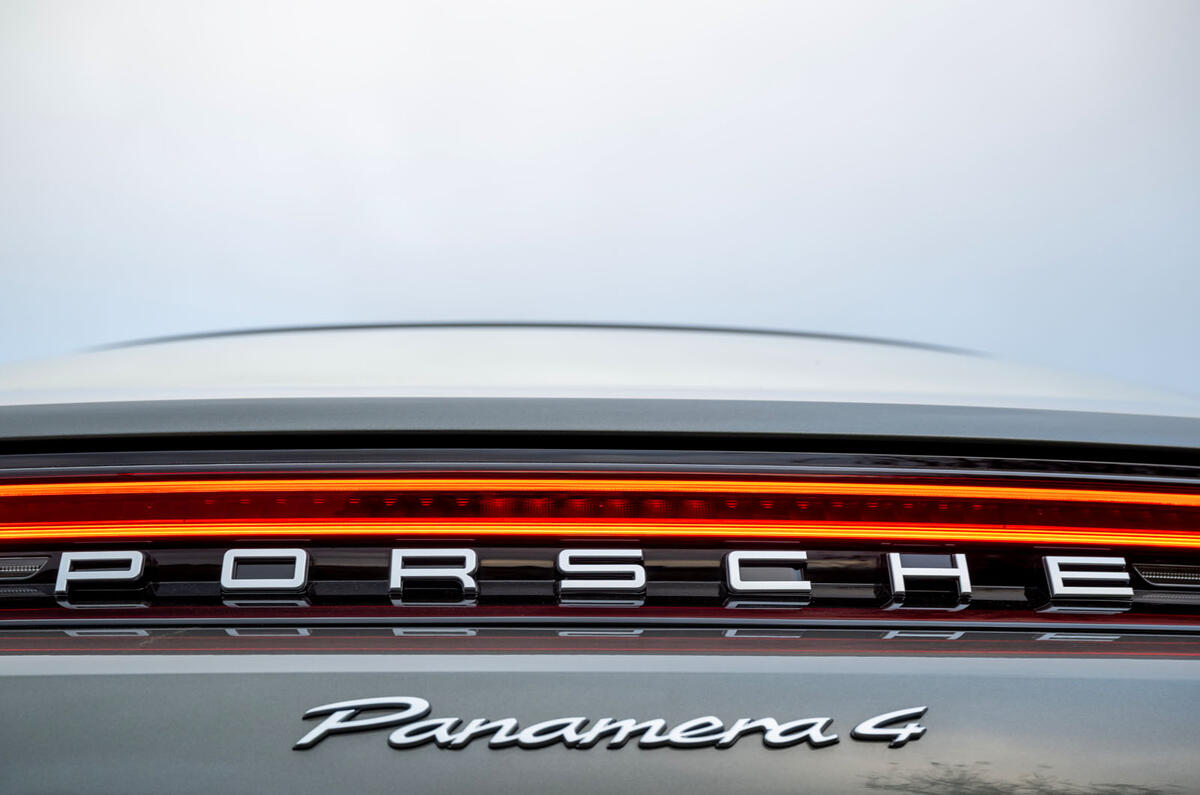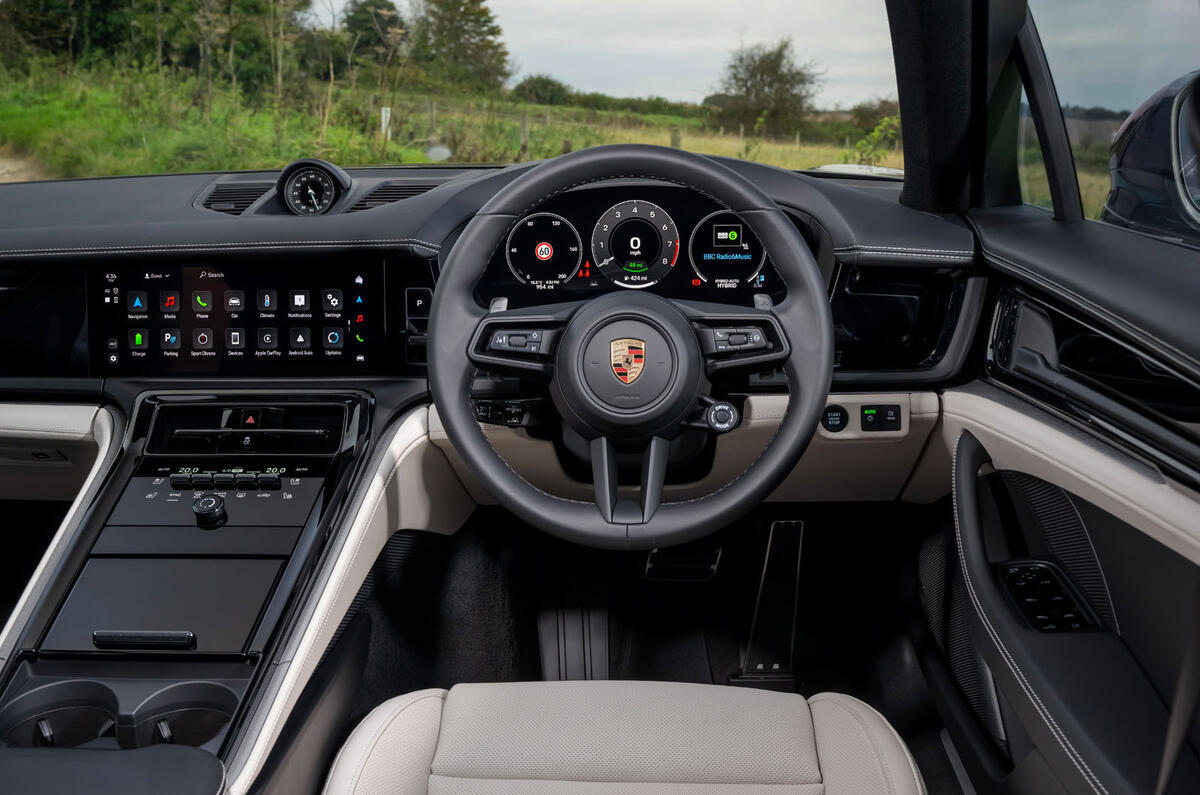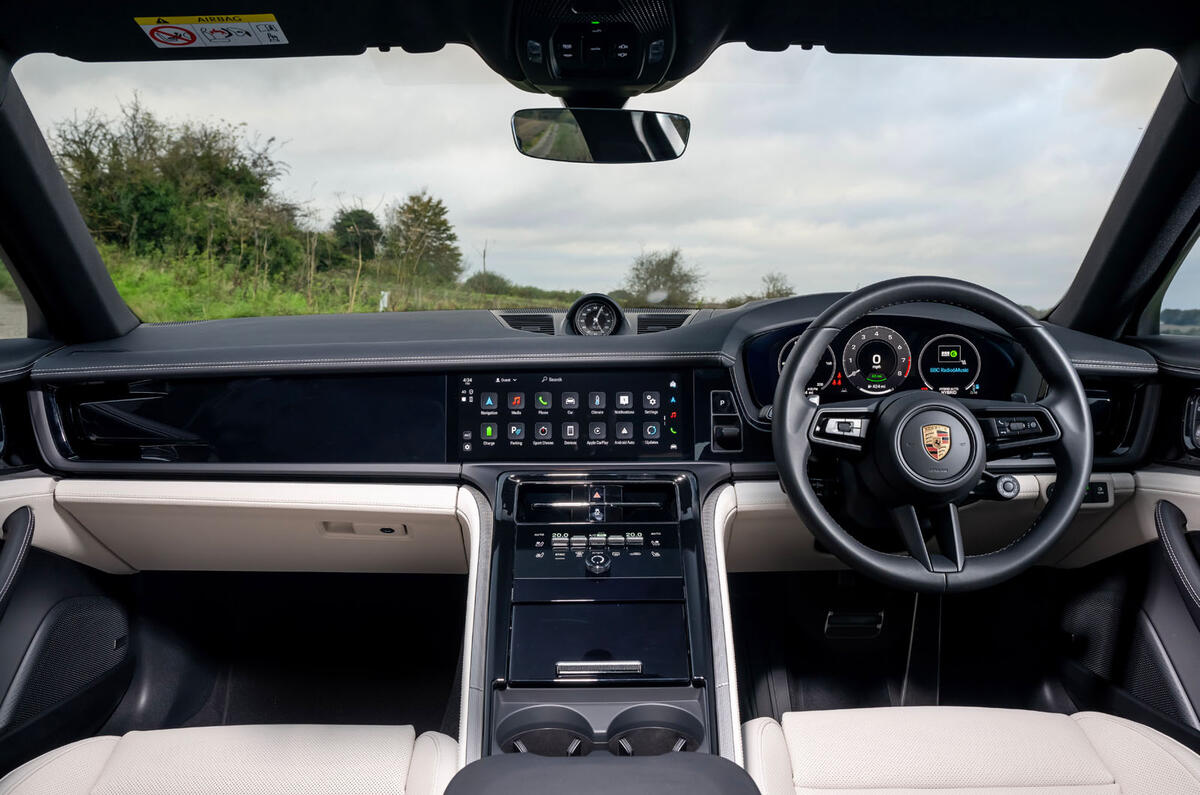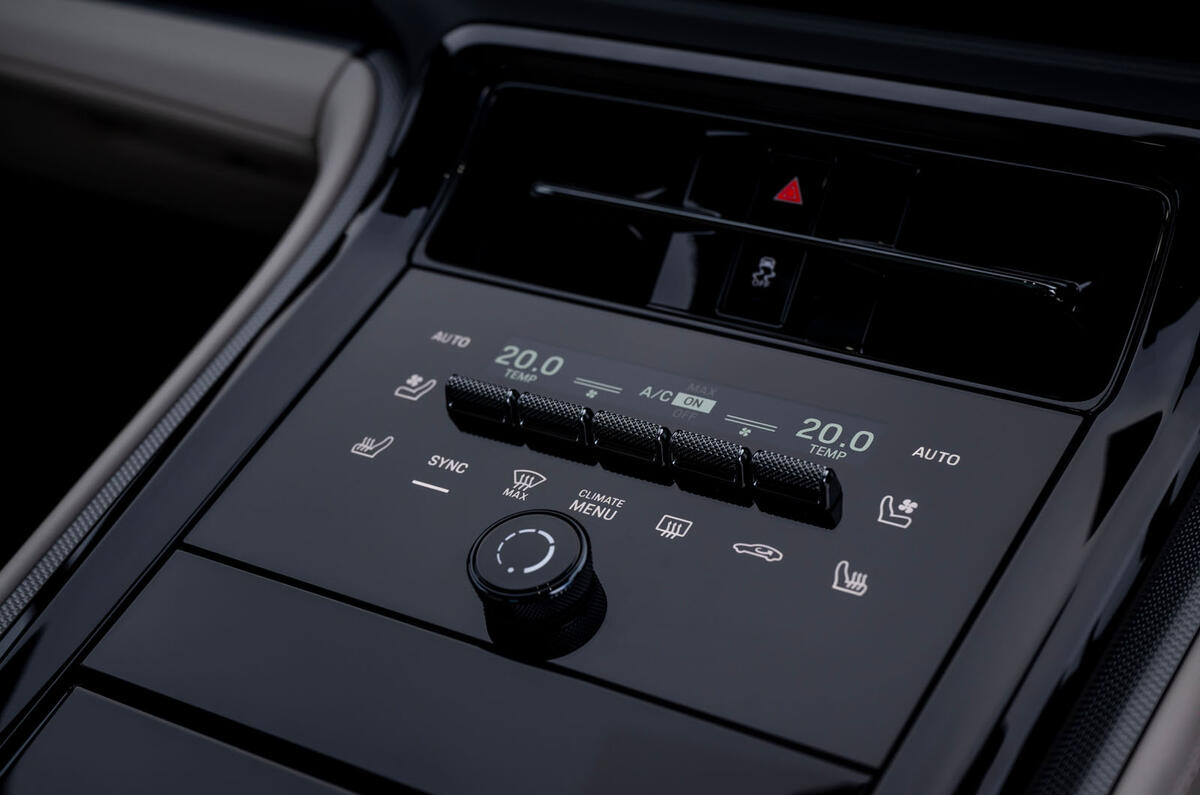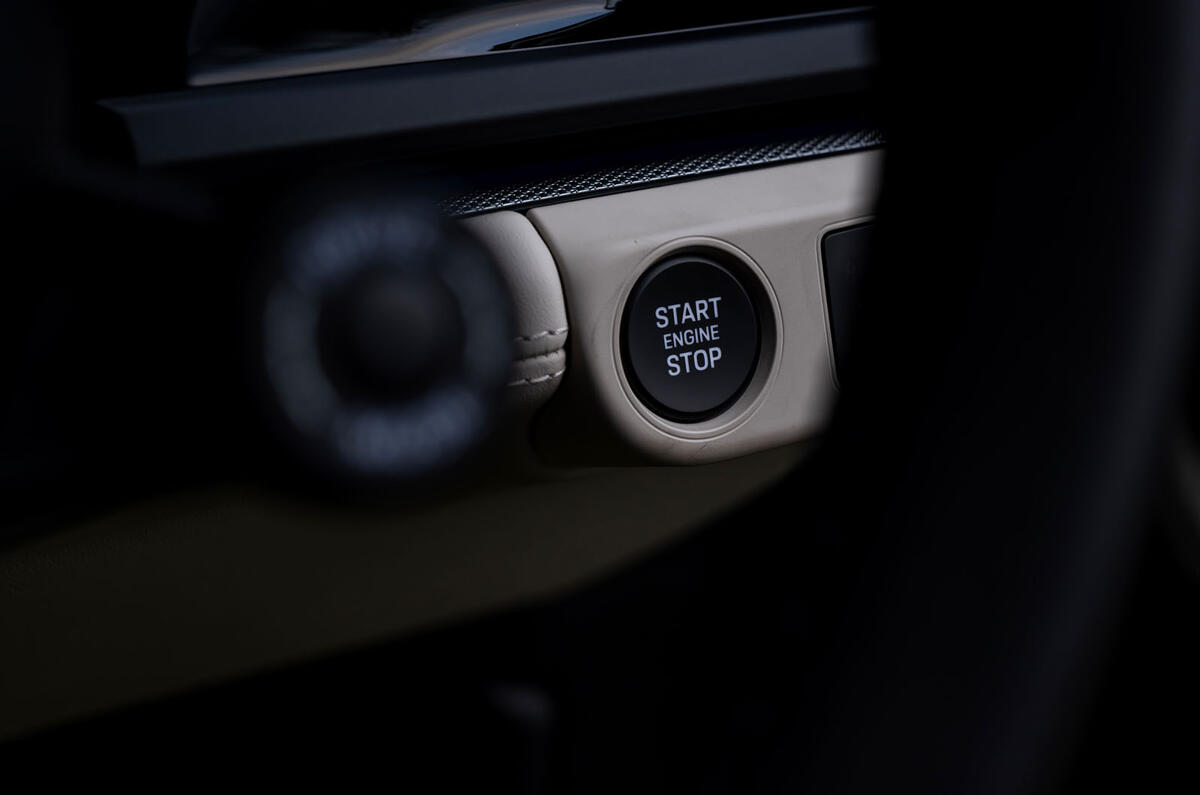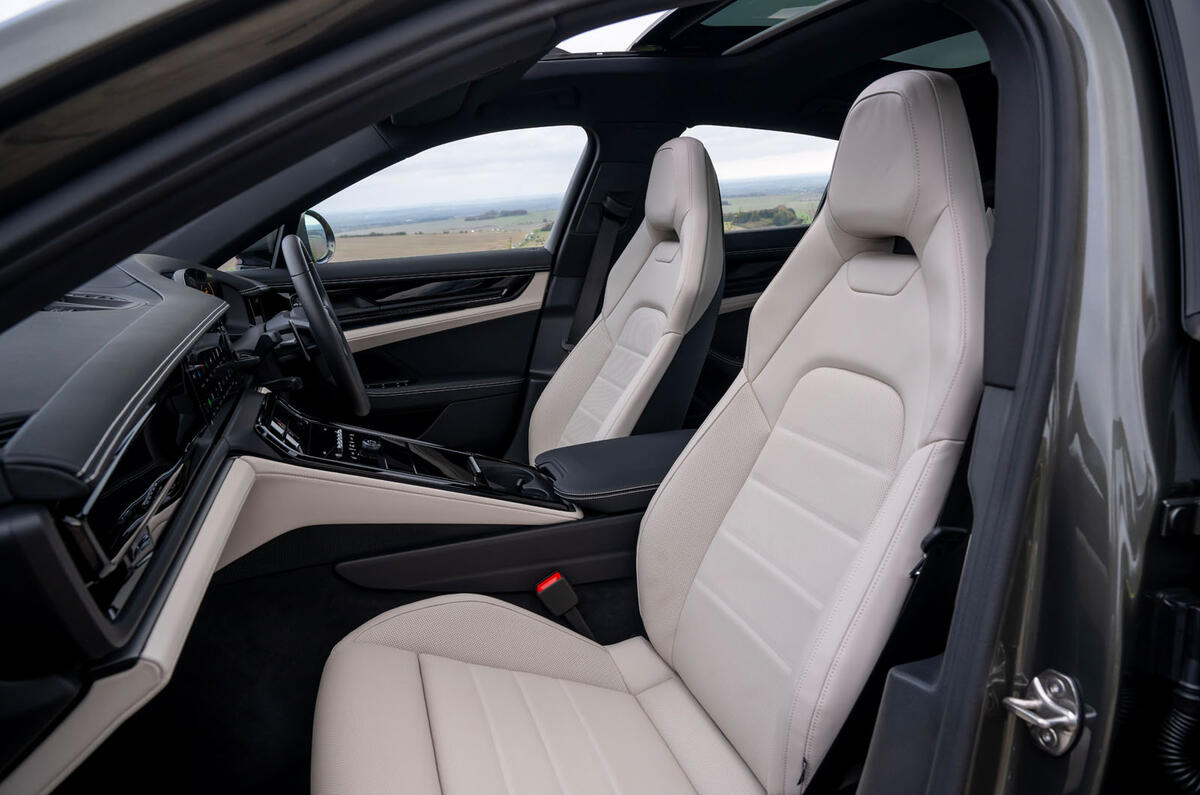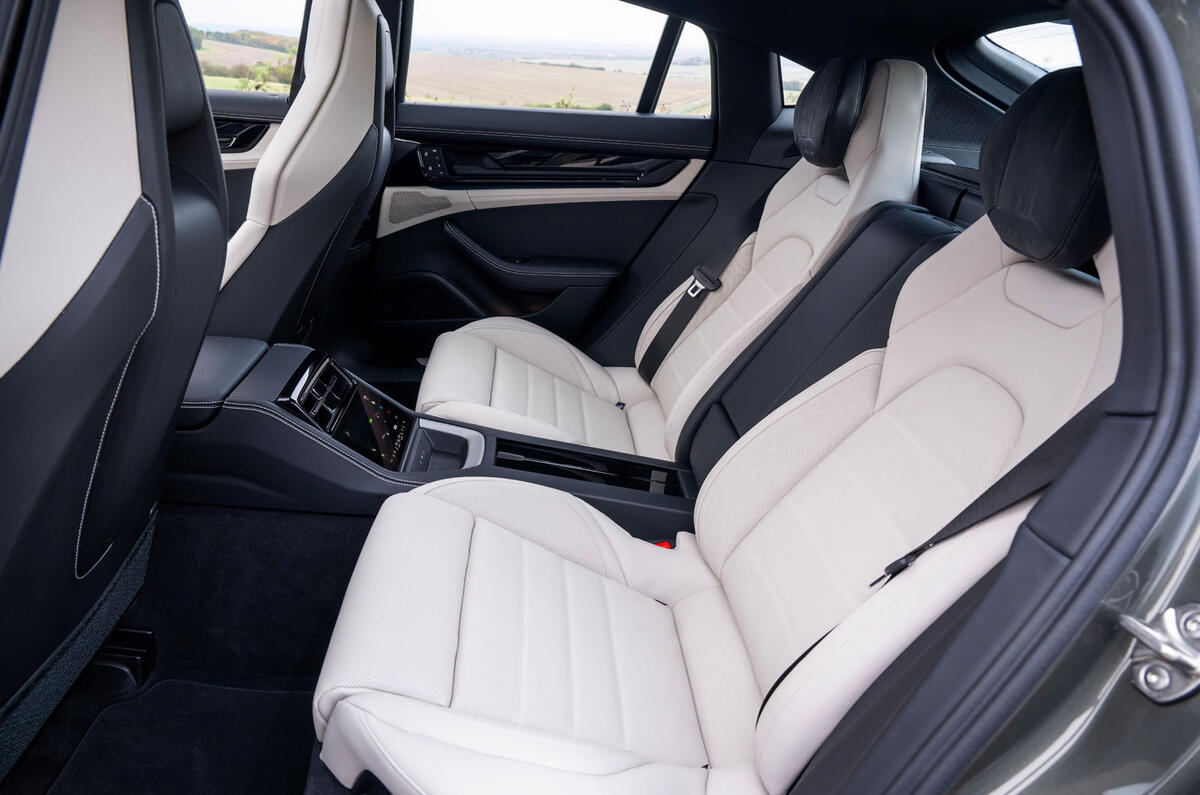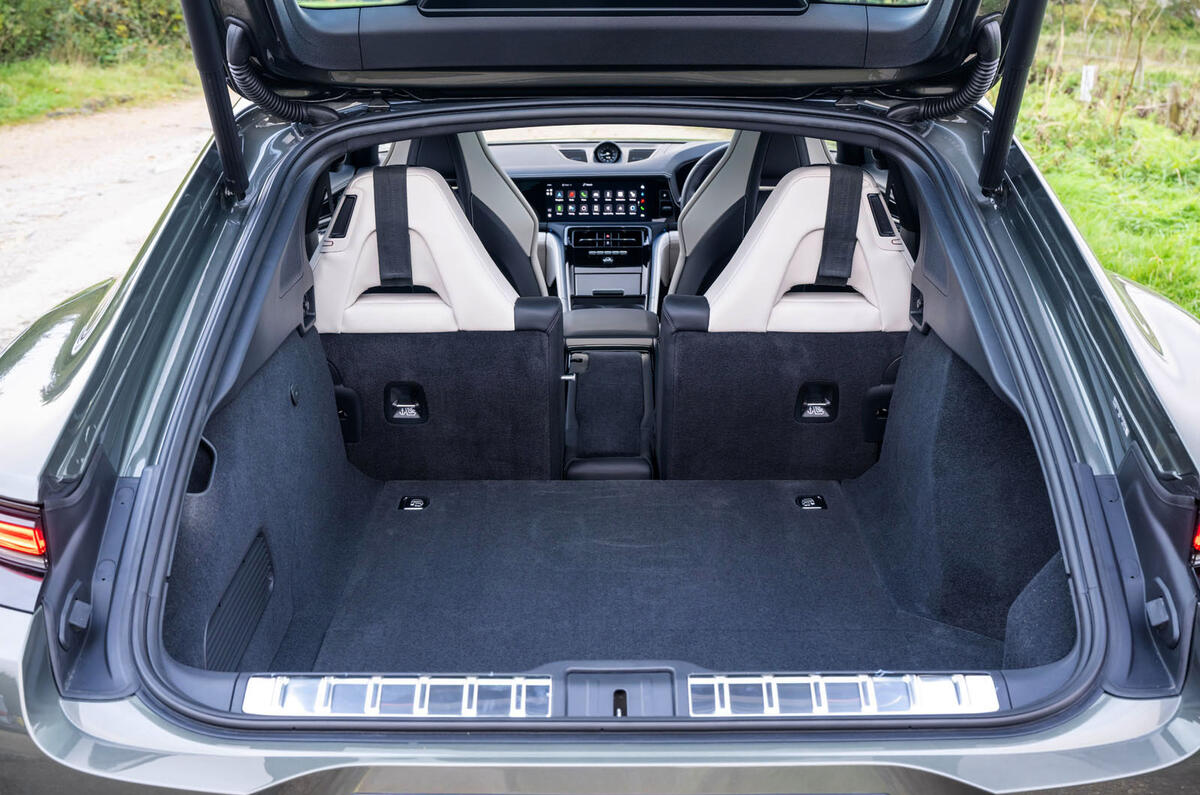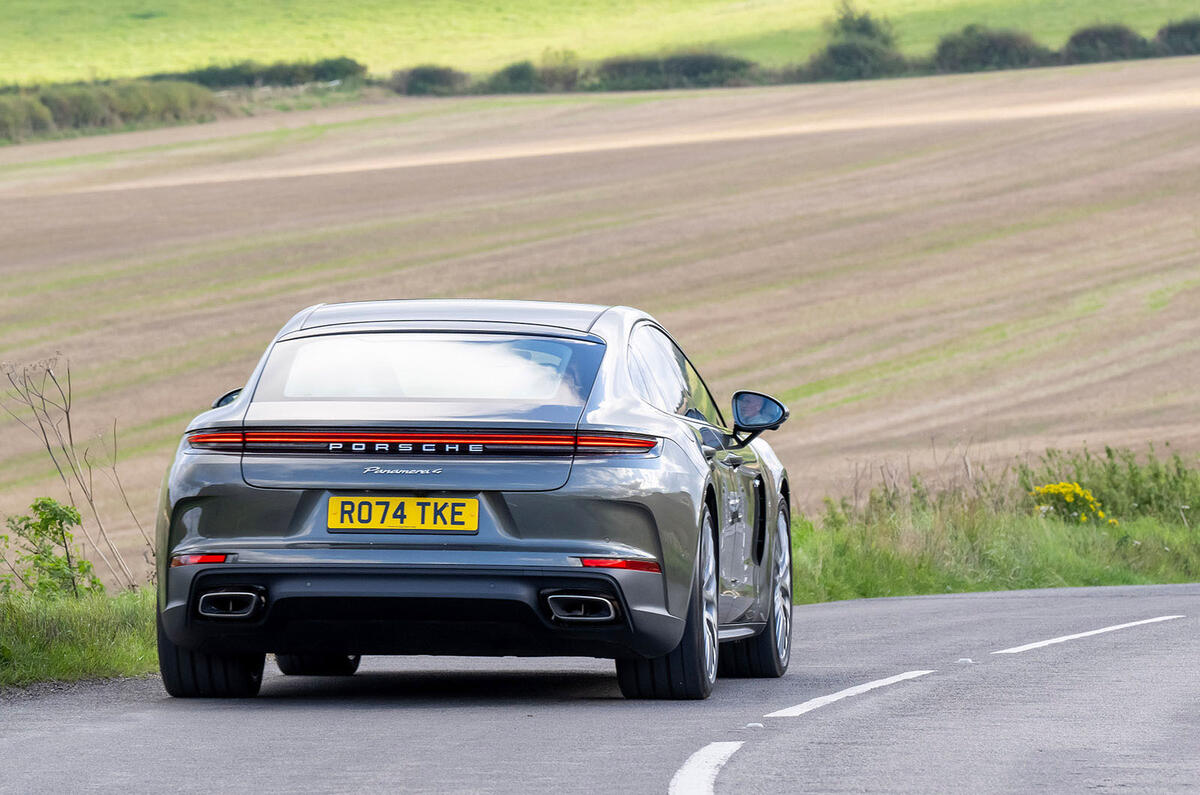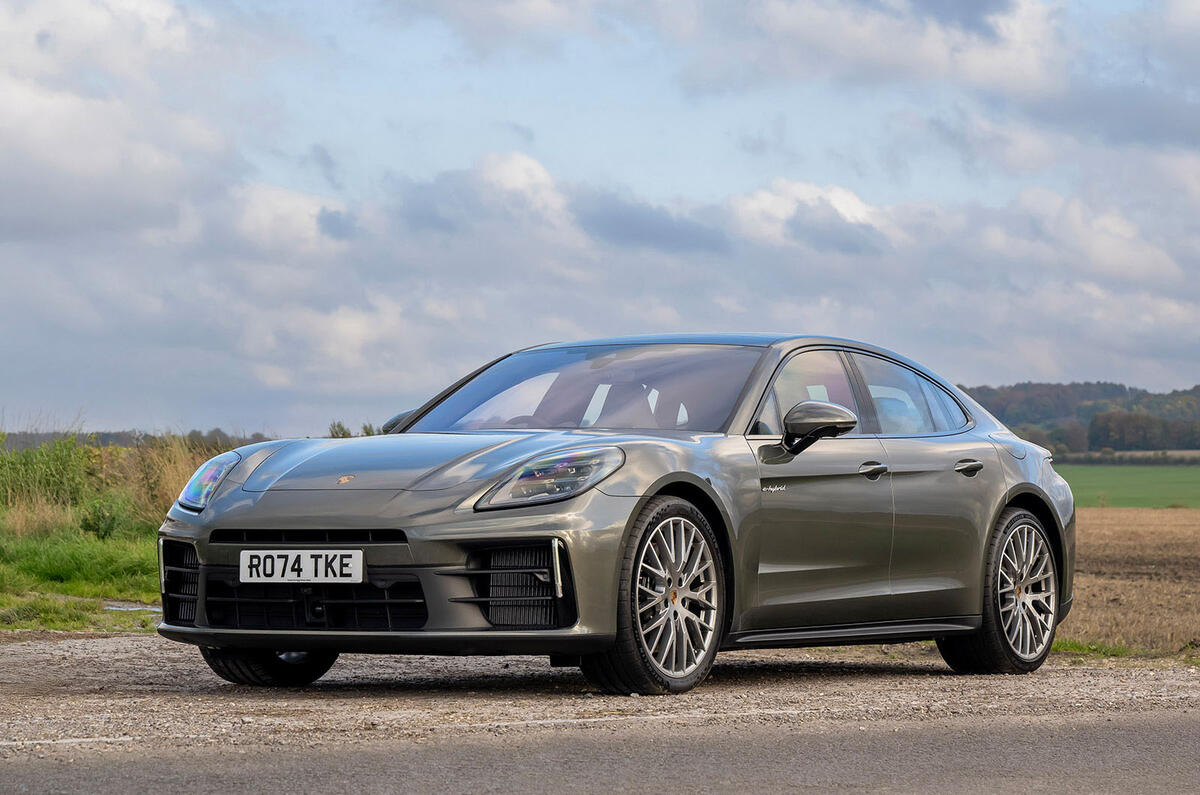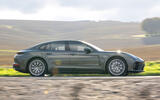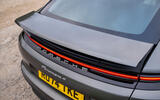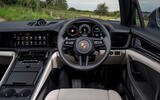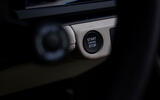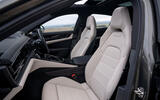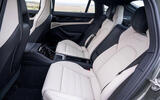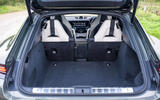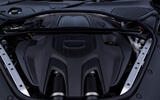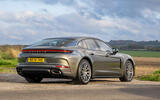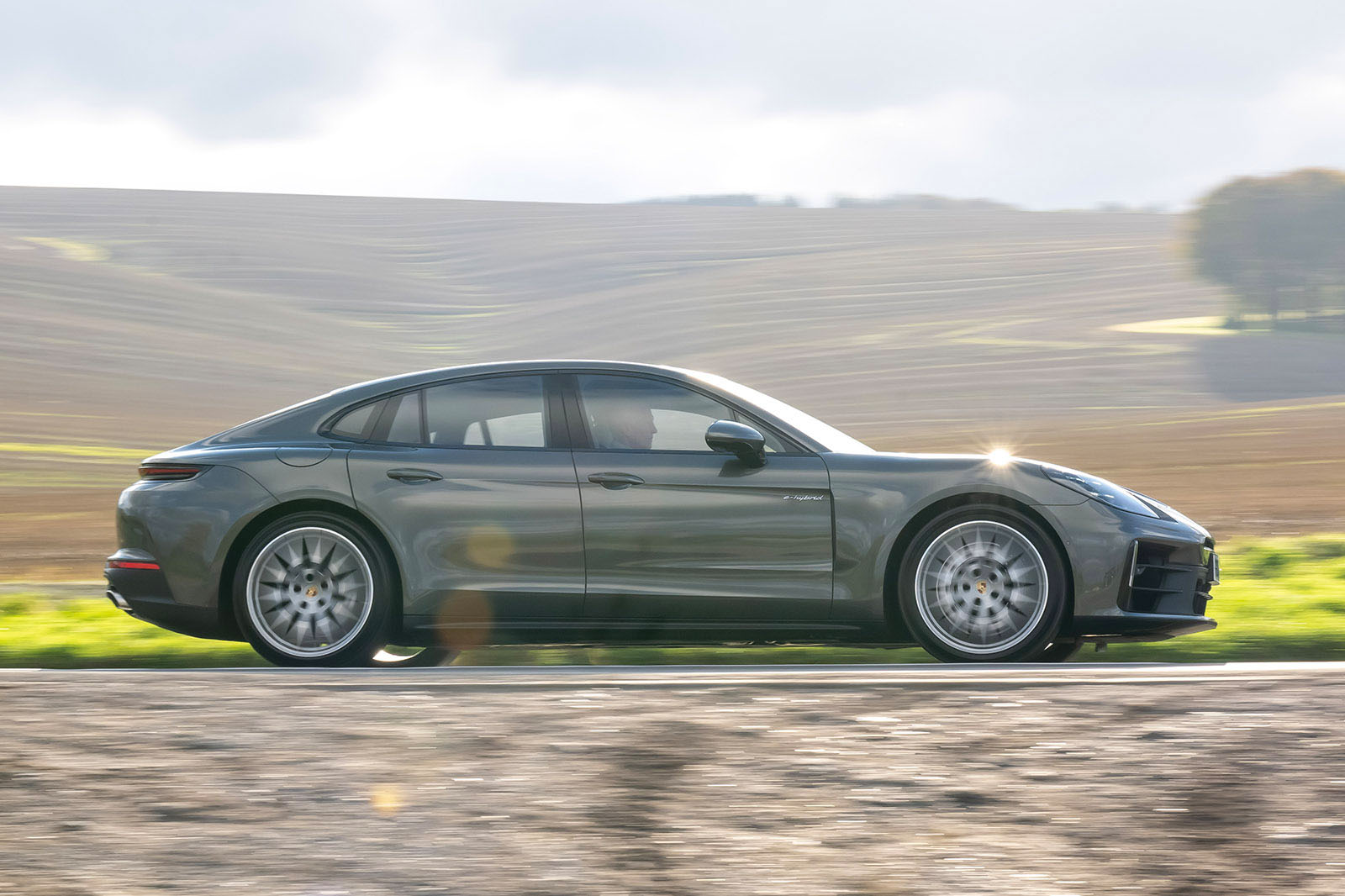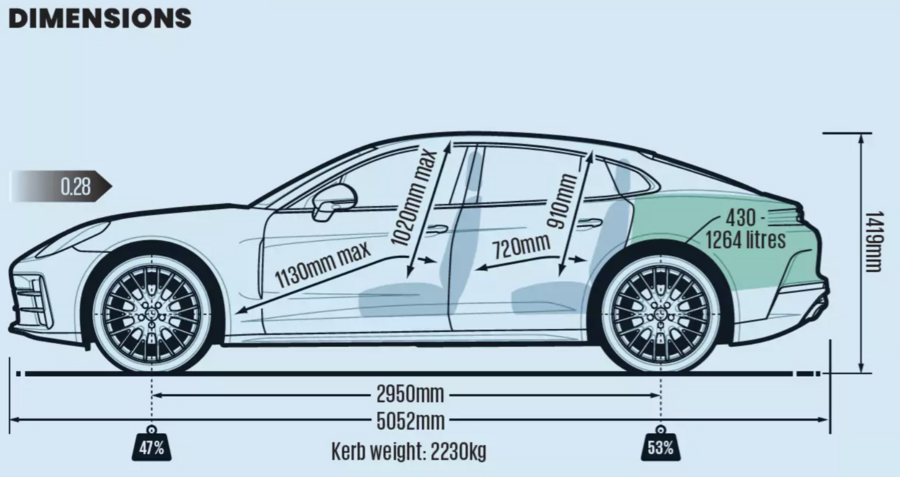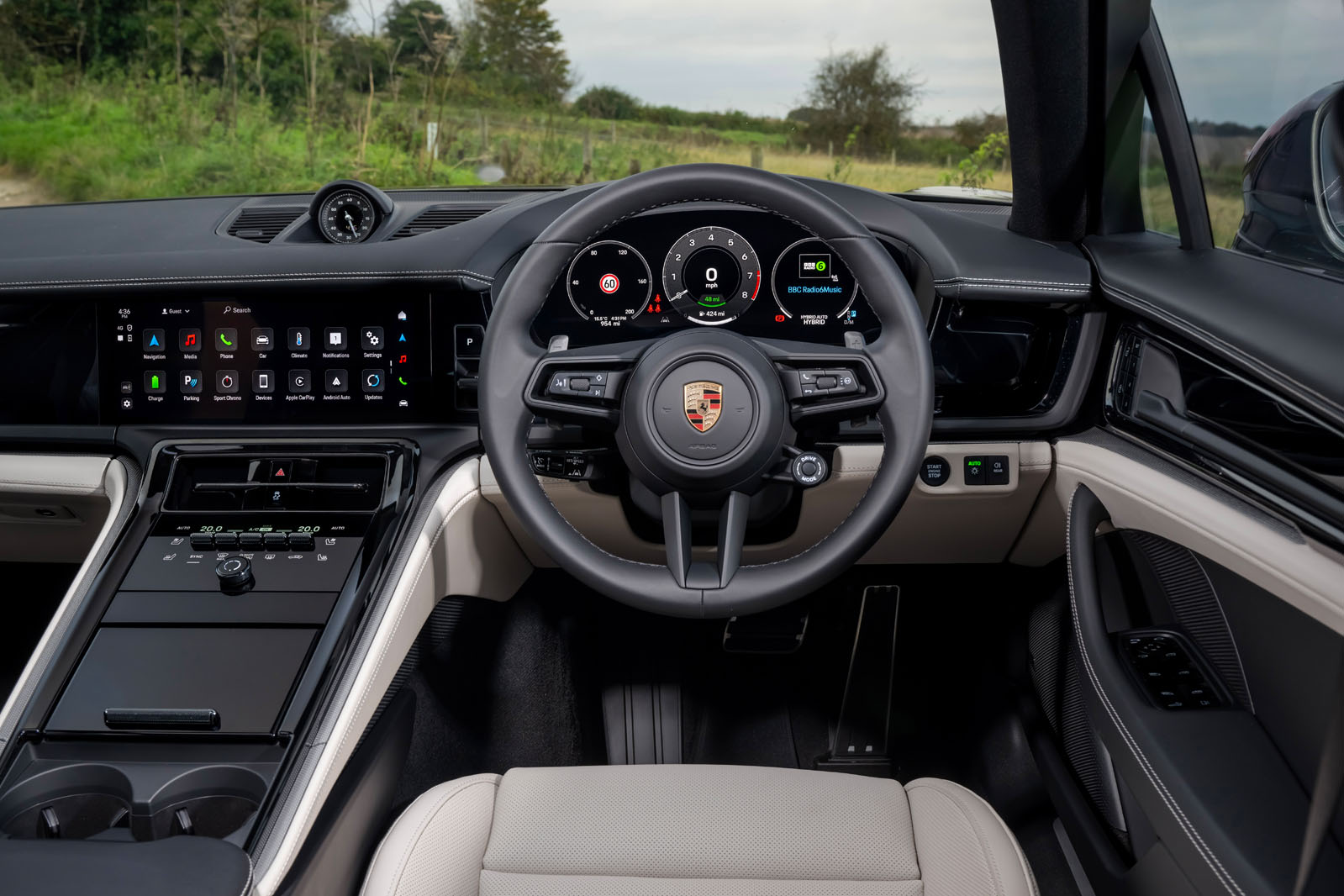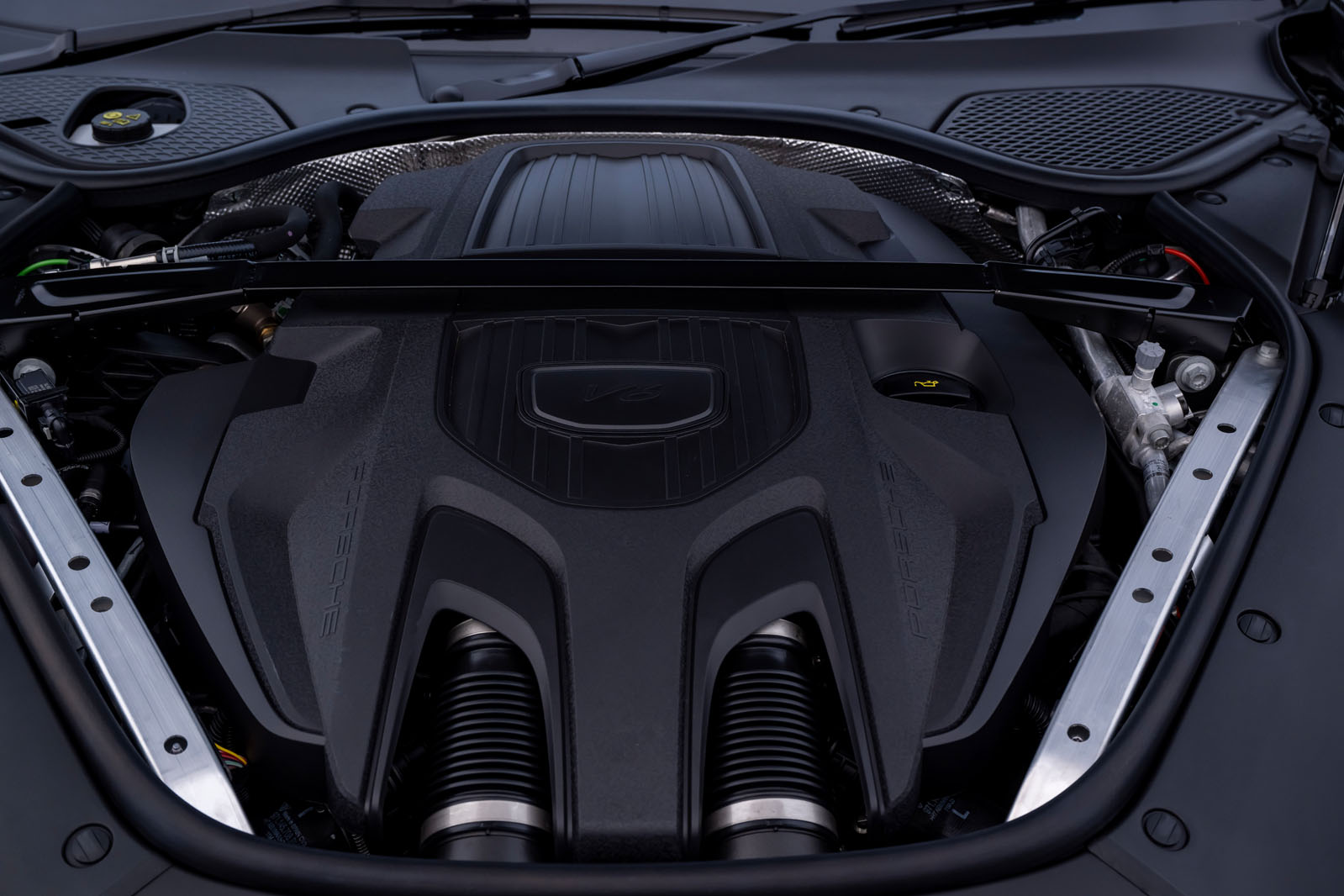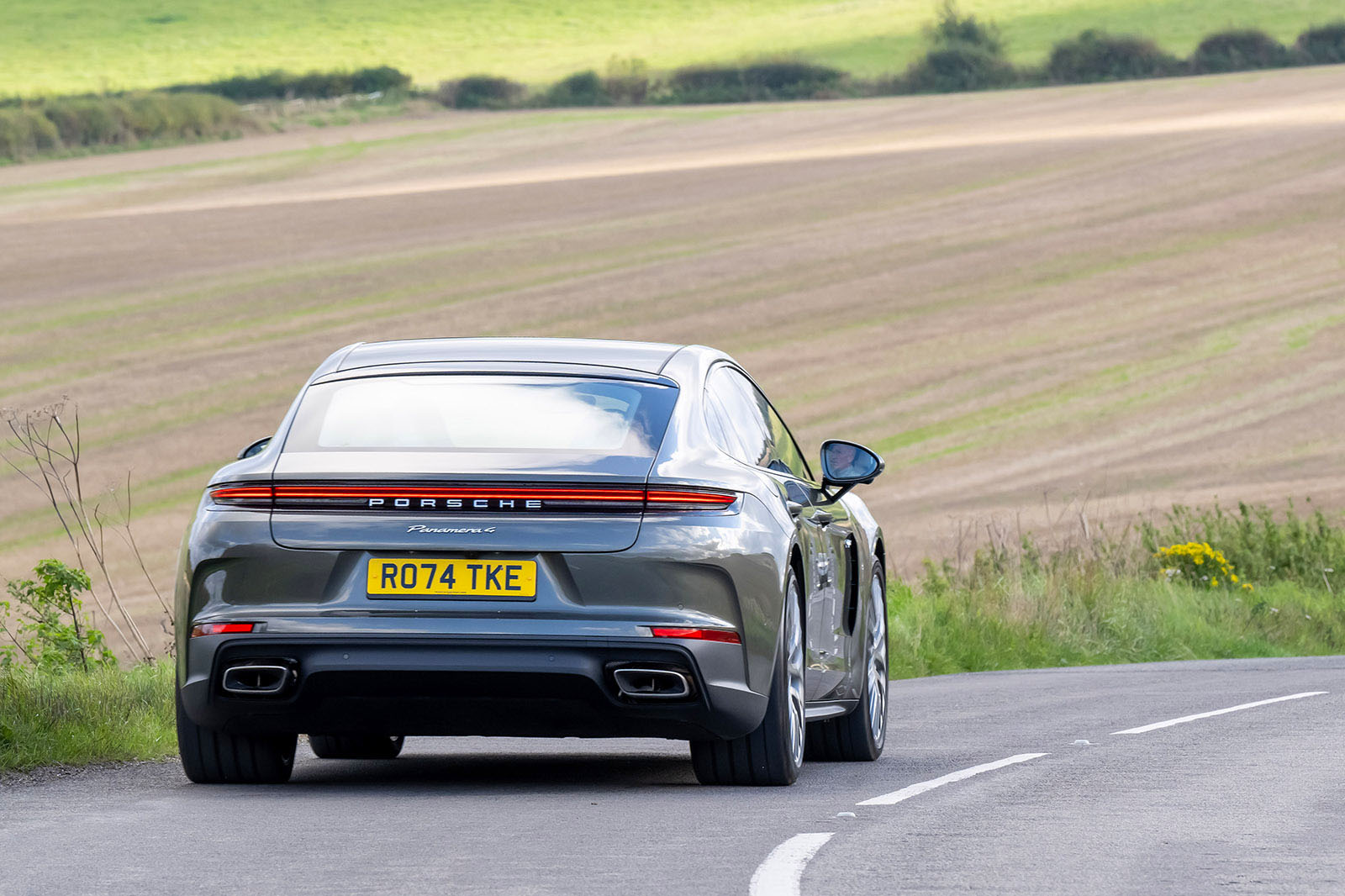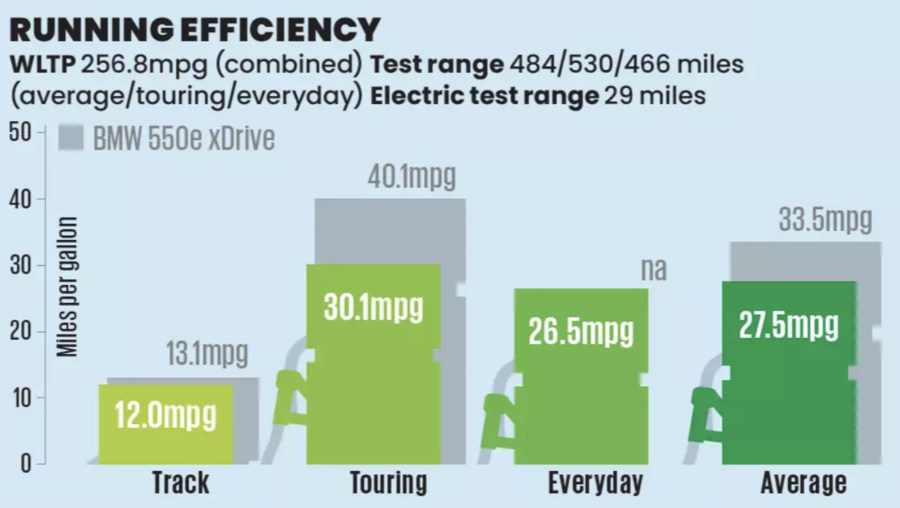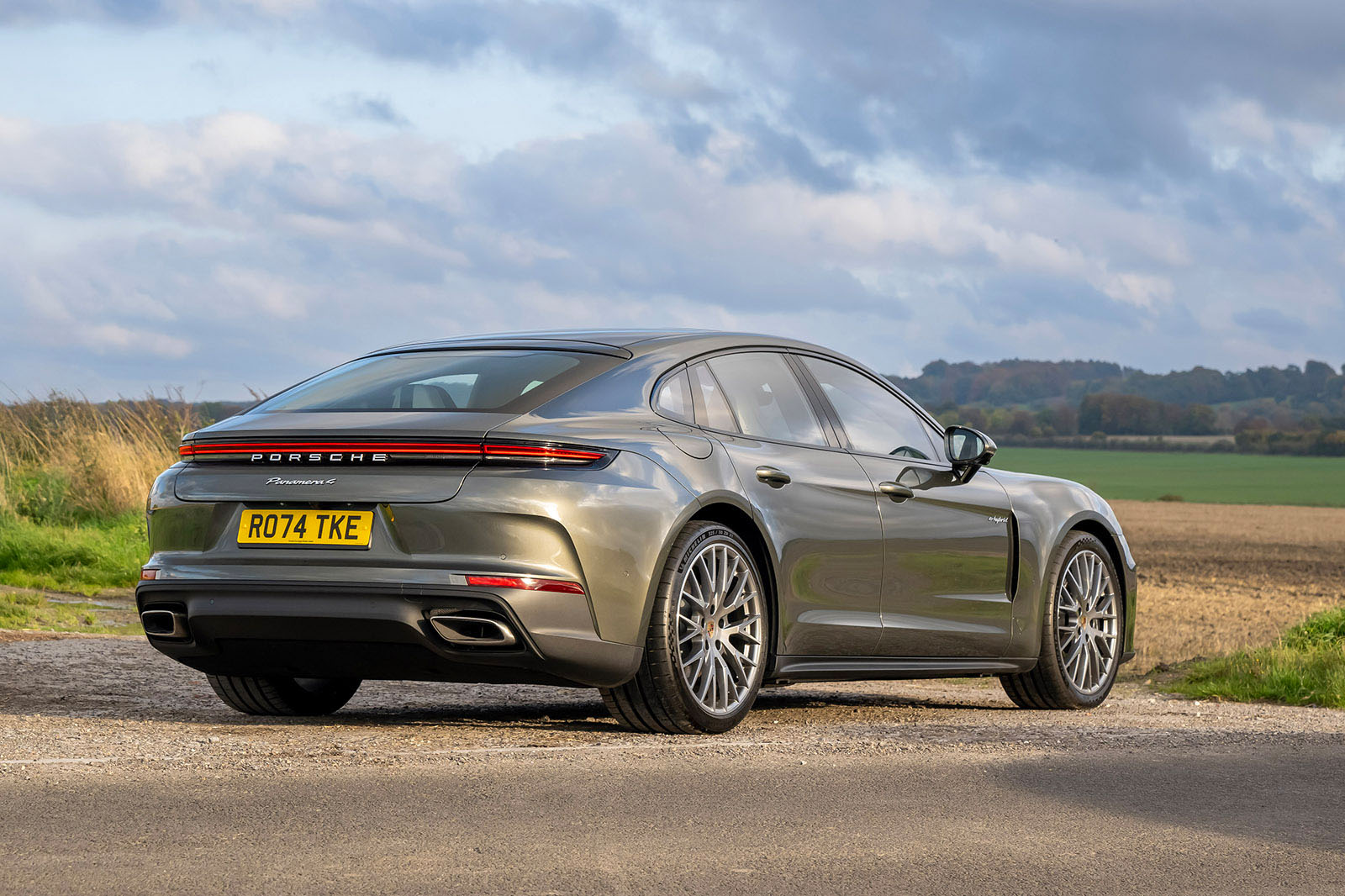As is now commonplace, the Panamera 4 E-Hybrid starts in electric mode. You turn it on then ghost off the mark and the car will continue to operate without its V6 engine for as long as the battery charge lasts. Unless, that is, you call for a sportier mode on the rotary control that hangs from one of the steering wheel spokes or – to use common parlance – you boot it, at which point the engine will fire up accompanied by a relatively low gear, ready to punt you forward.
As we’ll come to in a moment, electric range isn’t quite as generous as we’d hoped, but there’s no doubt about the maturity with which the Panamera conducts itself as an EV. Roll-on acceleration is neat and measured, and there’s adequate performance from the e-motor to flow the car along even undulating roads at the national speed limit. Top speed remains 87mph.
Enlisting the services of the twin-turbo engine makes the Panamera rather a lot quicker. The V6 is somewhat muted, because of all the emissions equipment it now wears, but flat out our test car took 3.8sec to reach 60mph and less than 10 seconds to break into triple figures. For one of the slower cars in the line-up, the 4 E-Hybrid is hardly pedestrian, though such is the car’s all-round composure and the seamless nature of the gearshifts that it can often feel just a little uneventful. A family-oriented, limousine-esque Porsche this may be, but it should still be exciting.
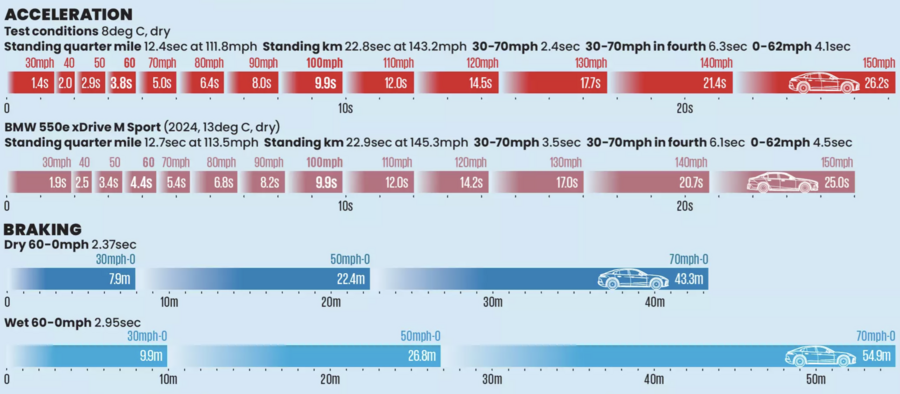
We’d also add that at least one tester felt that, were it their money, they would be tempted to opt for the 4S E-Hybrid, purely for that extra level of ‘zing’ that 537bhp and 553lb ft would yield in this heavy machine.
Not that you need ever shirk overtakes in the 4 E-Hybrid, with its 464bhp and 479lb ft. The effect of the electric motor is particularly palpable when you require a quick burst of speed, because the instant torque it injects into the driveline has the effect of dropping the gearbox a cog or two, while in reality the gearbox is processing the fact that you have squeezed the accelerator pedal an inch or two.
And what of shedding speed? Hybrid Panameras have in the past exhibited a certain softness in their brake pedals, which erodes confidence in such fast, heavy cars. The latest iteration still isn’t perfect but the system is in general decently intuitive; making small adjustments to your speed isn’t a guessing game.
Of course, when it comes to heavy stops requiring pad-on-disc action from the get-go, you’re treated to the trademark Porsche brake action, with its satisfying resistance. During repeated emergency stops from 70mph, our test car was a picture of calm, and aced our fade test, stopping notably sooner on its fifth stop than on its first.
And what about the driver-centric GTS?
When you come to the more expensive end of the model spectrum, you'll find the Panamera GTS actually sounds a bit nicer than the Turbo, with its more genuine, woofling V8 exhaust tuning, whereas the Turbo S uses more stereo-speaker digital fakery when you open its taps and dial up its Sport mode, which is a bit of a shame.
But the torque the Turbo S's hybrid system produces can catapult it out of tight bends in high gears before you’ve even found the limit of the accelerator travel, making 2.4 tonnes as nought. The V8 engine also likes to rev and keeps the car savagely on the boil when it is. It's a spectacularly fast saloon.
The 494bhp GTS, by contrast, doesn’t pin you back into your seat in quite the same way. This is one of those engines that appeals as much for what you might call qualitative performance reasons as quantitative ones. It sounds much more genuine than a Turbo hybrid thanks to that woofling exhaust. Get the motor on song, from about 3000rpm, and the car leaves little room to doubt its urgency. Moreover, the business of keeping it in the right gear using the paddle shifters, and mentally engaging with what you’re doing, is all part of the appeal.


